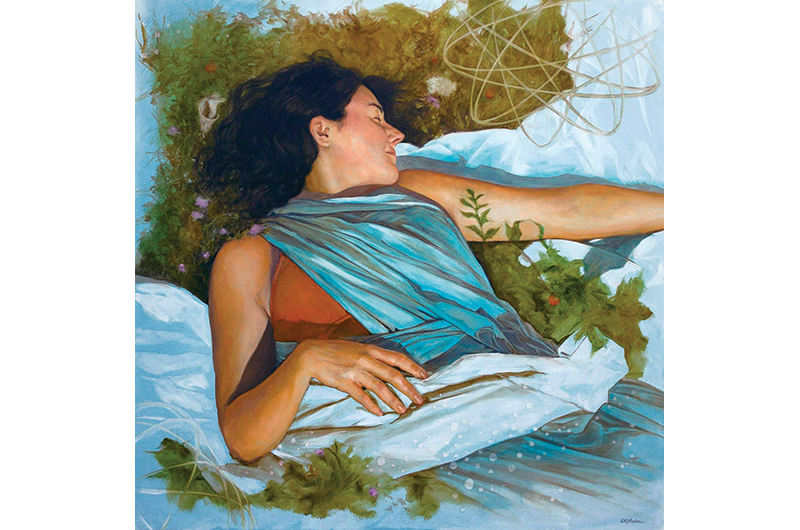“It’s never too late for someone to take up the pencil or brush,” said artist Elizabeth Whelan. And she would know. As a child she drew and sold her “scribbles” for a nickel each to buy candy. At twenty-six, she got a job as a screen-printing illustrator. At the age of forty-eight she was “bitten by the painting bug.” She’s now known as the Island’s go-to portrait artist, having captured the likes of boatbuilder Nat Benjamin, musician Will Luckey, and author Geraldine Brooks in large, lifelike oil or acrylic portraits from her studio on Chappaquiddick.
Although Whelan primarily works on commissions these days, her most recent personal collection was inspired by the connection between science and art. In conjunction with the Inseparable: Science + Art show at Featherstone Center for the Arts this past summer, Whelan painted six portraits of local women in the sciences, including shellfish hatchery manager Amandine Surier Hall and wildlife biologist Luanne Johnson, as well as three figurative works depicting “the world around us at the atomic level” – earth, air, and water.
“In early conversations with designer Stina Sayre, who co-curated the Inseparable show, we talked about fabric as a dynamic element in painting. I took that idea and mixed it with a classical look at the elements – back to the days when humans thought of the elements in the most basic terms,” she said.
For the 44-x-44-inch mixed media on canvas pieced titled Earth, shown above, Whelan had her neighbor Theresa DiMattia pose in places around Chappy as a reference point. “I had her at Wasque lying among the native plants near the Chappy landing,” she said, and even in various bodies of water. “She was a real sport about it.
“I did a good deal of ‘drawing’ in paint to create a strong underpainting and applied thin and thick layers of oil paint over this to achieve the feeling of warm skin in sunlight, and cool cloth and plants around her,” Whelen explained. “I worked from pencil and charcoal sketches that I made from the photo reference, creating a strong composition and then using the reference to get the details right when painting. There’s a point at which I abandon the reference, however, and let the painting and my imagination work hand in hand.”
As with most of her paintings, Whelan worked on the piece over a number of months. The other three figurative element paintings (fire, space, and time) she is creating will take her at least another six or so months. But that won’t mean the end for her dive into the connections between science and art.
“There’s enough scope in any branch of science to last me a lifetime,” she said. “I am looking forward to continuing to work at the intersection of science and art.”





